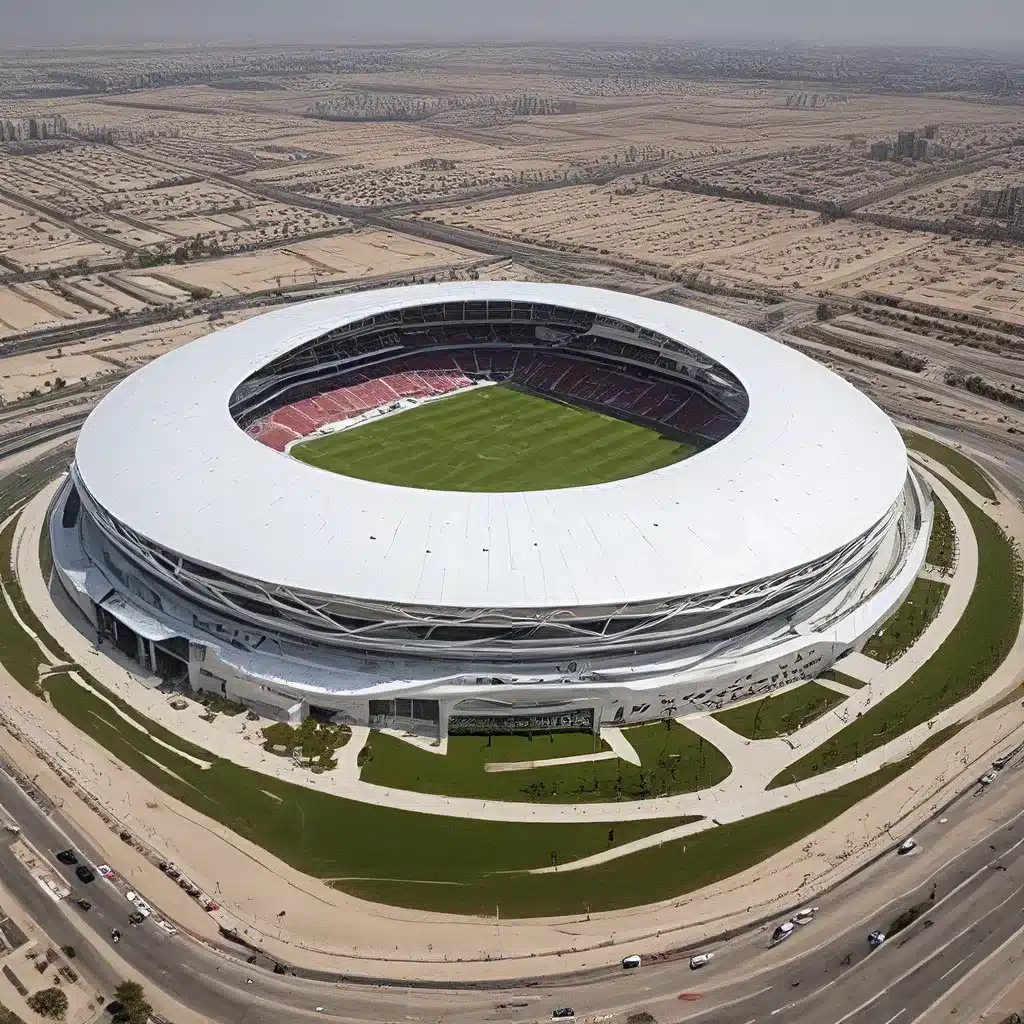
Architectural Brilliance and Sustainable Design
The Education City Stadium in Al Rayyan, Qatar is a true marvel of modern engineering and sustainable design. As part of Qatar’s ambitious plans to host the 2022 FIFA World Cup, this stadium stands as a testament to the country’s commitment to environmental stewardship and innovative architecture.
Designed by the acclaimed architectural firm OMA, the Education City Stadium is a stunning example of how sport and sustainability can coexist. The stadium’s futuristic design, with its striking geometric patterns and dynamic silhouette, immediately captures the attention of visitors and sports enthusiasts alike.
One of the most remarkable features of the Education City Stadium is its adherence to sustainable principles. The stadium’s architects have seamlessly integrated eco-friendly practices into every aspect of its construction and operation. From the use of renewable materials to the implementation of energy-efficient systems, the stadium is a shining example of how modern architecture can prioritize environmental responsibility.
Innovative Cooling System
A key aspect of the stadium’s sustainability efforts is its state-of-the-art cooling system. Recognizing the challenges posed by Qatar’s hot and arid climate, the architects have developed a cutting-edge cooling technology that ensures a comfortable experience for players and spectators alike.
The stadium’s cooling system utilizes solar-powered technology to regulate the temperature within the venue. Photovoltaic panels installed on the stadium’s roof capture the abundant sunlight and convert it into clean, renewable energy, which then powers the advanced cooling infrastructure.
This innovative approach not only reduces the stadium’s carbon footprint but also sets a new standard for sustainable stadium design. By harnessing the power of the sun, the Education City Stadium showcases Qatar’s commitment to renewable energy and its efforts to create a greener future.
Adaptive and Transformative Design
The Education City Stadium’s design goes beyond just aesthetics and sustainability; it also demonstrates a remarkable level of adaptability and transformative capabilities. The stadium’s modular design allows for the reconfiguration of its seating capacity, making it suitable for a wide range of events and competitions.
During the 2022 FIFA World Cup, the stadium will host several matches, including group stage games and a quarterfinal. After the tournament, the stadium’s capacity will be reduced from its initial 40,000 seats to a more manageable 20,000, ensuring that the facility remains relevant and useful for the local community.
This adaptive design is a testament to the stadium’s long-term vision and its alignment with Qatar’s broader sustainable development plans. By considering the post-event utility of the stadium, the architects and the Qatari government have ensured that the Education City Stadium will continue to serve the local community long after the final whistle of the World Cup.
Integrating with the Surrounding Community
The Education City Stadium is not just a sports venue; it is a vital component of the larger Education City development in Al Rayyan. This sprawling complex is a hub of academic and intellectual activity, housing numerous universities, research institutions, and the headquarters of the Qatar Foundation.
By integrating the stadium into this vibrant ecosystem, the architects have created a synergistic relationship between the sporting facility and the surrounding educational and cultural institutions. The stadium’s design allows for seamless integration with the broader campus, encouraging student engagement, community involvement, and educational initiatives that leverage the stadium’s resources and facilities.
This holistic approach to the stadium’s development aligns with Qatar’s National Vision 2030, which emphasizes the importance of sustainable and community-focused infrastructure. By weaving the Education City Stadium into the fabric of the local community, the project ensures that its impact extends far beyond the realm of sports, contributing to the overall intellectual and cultural growth of the region.
Architectural Accolades and Recognition
The Education City Stadium’s innovative design and commitment to sustainability have not gone unnoticed. The project has received numerous accolades and recognition from prestigious architectural and sustainability organizations around the world.
In 2020, the stadium was awarded the MIPIM Award for the “Best Futura Project” category, acknowledging its visionary approach to stadium design. The stadium has also been recognized by the Institution of Structural Engineers for its outstanding sustainable design and engineering.
These accolades serve to highlight the Education City Stadium’s position as a global leader in sustainable sports infrastructure. By seamlessly blending cutting-edge architecture, innovative technology, and environmental responsibility, the stadium sets a new benchmark for the future of stadium design and construction.
Conclusion: A Sustainable Legacy
The Education City Stadium in Al Rayyan is more than just a sports venue; it is a testament to Qatar’s commitment to sustainable development, environmental stewardship, and community-focused infrastructure. Through its innovative design, energy-efficient systems, and adaptive capabilities, the stadium not only serves as a hub for sporting events but also contributes to the broader educational and cultural ecosystem of the surrounding region.
As the world turns its attention to the 2022 FIFA World Cup, the Education City Stadium will undoubtedly captivate audiences with its futuristic appearance and environmentally responsible operations. But beyond the tournament, this remarkable stadium will continue to serve as a beacon of sustainability, inspiring other nations to rethink the way they approach the design and construction of sports facilities.
By visiting the Old Stadium Journey website, readers can explore a wealth of information about the world’s most remarkable stadiums, including the Education City Stadium, and discover how these architectural marvels are redefining the future of sports infrastructure.

